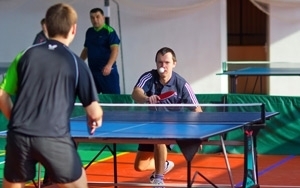CPCs Play Ping-Pong With Search Marketers
- by Laurie Sullivan @lauriesullivan, January 16, 2014
 The cost per click (CPC) for paid-search and product listing ads running on Google and Yahoo Bing Network continue to bounce like a Ping-Pong ball in the hands of a child, per separate
fourth-quarter reports released from search agencies Covario, Kenshoo, and Rimm-Kaufman Group.
The cost per click (CPC) for paid-search and product listing ads running on Google and Yahoo Bing Network continue to bounce like a Ping-Pong ball in the hands of a child, per separate
fourth-quarter reports released from search agencies Covario, Kenshoo, and Rimm-Kaufman Group.
The reports, which analyze digital trends across a variety of markets, agree on several
factors leading to unstable CPCs during the past few quarters.
Marketers in the Americas supported by Covario spent 9% more in Q4 2013 on campaigns, and 17% sequentially. Global CPC prices rose 10% compared with the year-ago quarter, but fell sequentially among the agency's clients, mostly multinational high-tech brands.
Several factors forced CPCs to rise and fall depending on the search engine, region and industry. On Google in the United States, CPCs rose 10% in the quarter; and on the Yahoo Bing network CPCs fell 6% compared with the year-ago quarter, per Covario. Notably, the effectiveness of the ads -- as measured through click-through rates (CTRs) -- performed 28% better compared with the same quarter a year ago.
Covario analyst Alex Funk believes several factors led to unstable CPCs during the quarter. He points to an increase in mobile advertising that caused smartphone CPCs to fall 47% lower than desktop, mid-year updates to algorithms on Google Enhanced Campaigns, and increased investments in product listing ads (PLAs).
At Google, PLAs accounted for 23% of all traffic and 42% of competitive traffic -- which excludes clicks on keywords that include a site's own brand name, per RKG. Bing Product Ads, which launched in Q3 as a closed beta, accounted for 7% of budgets spent with the engine.
The RKG report suggests marketers spent 72% more on PLAs in the fourth quarter compared with the year-ago quarter, whereas Covario and Kenshoo note that marketers spent 70% and 80%, respectively.
RKG analysts believe competition among PLAs will likely drive up CPCs as return on investment outpace comparable Google text ads by 18%. The agency also estimates that mobile now accounts for a greater share of PLA traffic than Google text ad traffic.
Paid-search RKG clients increased the amount spend on paid-search and PLAs by 23% year-over-year in Q4 2013 -- a slight acceleration from Q3 growth. Analysts saw a shift toward traffic gains driving additional investments, so as click volume rose 19% in Q4, average CPC inched up 3%.
Among RKG clients, CPCs for text showed slower increases, but non-brand click volume rose 43% across the Bing Ads platform. With CPCs up 5%, compared with the year-ago quarter, overall the total from non-brand campaign investments rose 50%.
A couple of surprises emerged from campaigns on Amazon and Facebook, per RKG. CPCs for the Facebook Exchange were 37% lower than typical display in Q4, although this generated 11% less revenue-per-click than display overall. RKG also reports an average CPC 18% lower for Amazon Product Ads compared with Google PLAs in the quarter.
In Kenshoo's 2013 Global Online Retail Seasonal Shopping Report, the
agency reports a 3.37% decline in CPCs during the quarter among its clients. It's also important to note that during the quarter among its retail clients, impressions rose by 4.96%, clicks by 12.63%,
ad spend by 8.44%, and conversions by 21.15%.
"Playing Ping Pong" photo from Shutterstock.


